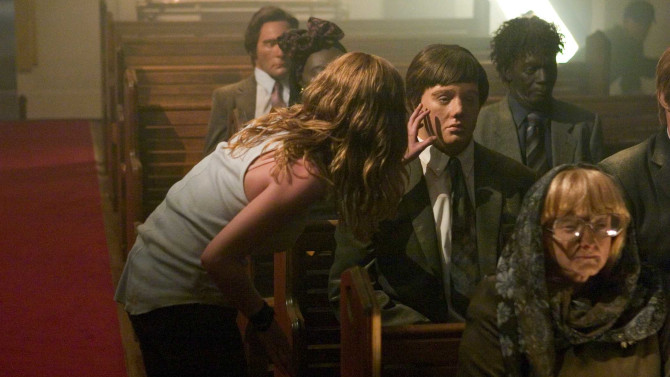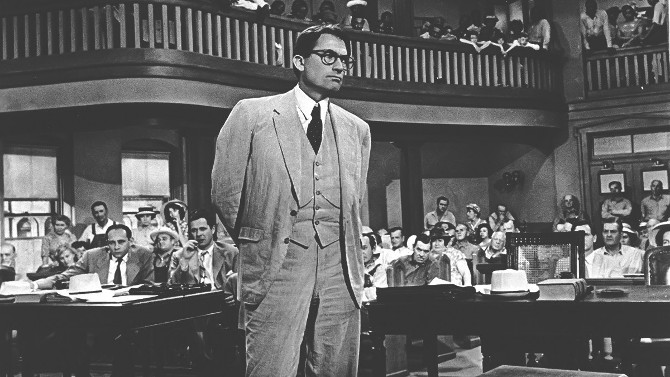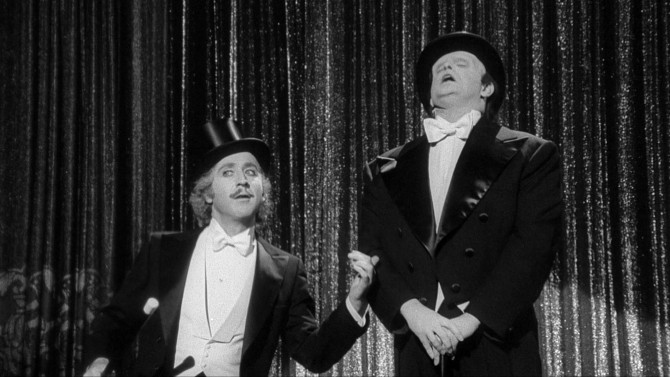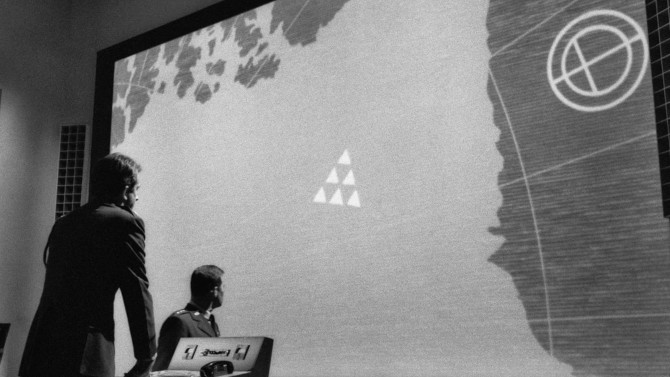
Safety First
Like a severe and utterly serious version of Stanley Kubrick’s 1964 satirical dark comedy Dr. Strangelove or: How I Learned to Stop Worrying and Love the Bomb, you would think that Fail Safe would have been the original release in theatres that was then later spoofed, yet that is not the case. Released approximately six months later in the same year, as you might imagine, it led to very poor returns at the box office – dare I say it (as the film deals with this subject matter)... it was a bomb! Despite that, over time, it has become a bonafide classic. Based upon Eugene Burdick’s 1962 novel of the same name and directed by Sidney Lumet (Dog Day Afternoon), he introduces us to our main players by way of little vignettes.
-
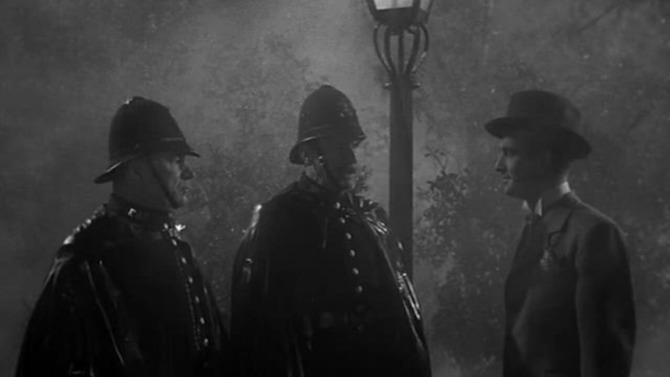
The Park, The Rain, and Other Murderous Things
She-Wolf of LondonOctober 10, 2023Taking a more melodramatic angle of the horror genre, towards the end of Universal’s golden age of scary movies comes 1946's She-Wolf of London, directed by Jean Yarbrough – a change of pace from the Lon Chaney Jr. led Universal features (he had already played the Wolf Man four times to this point, and would soon do so one last time in Abbott and Costello Meet Frankenstein). A period piece set in London, horrific murders continue to take place in a local park near the wealthy estate of the Allenby’s. Long rumoured to be cursed, the last vestige of the line is Phyllis Allenby (June Lockhart), a young, nervous woman who, instead of cheerfully planning her wedding to barrister Barry Lanfield (Don Porter), frets about the growing number of deaths in the vicinity – wondering if these acts might have been unknowingly done by her very own hand.
-
Wax Works
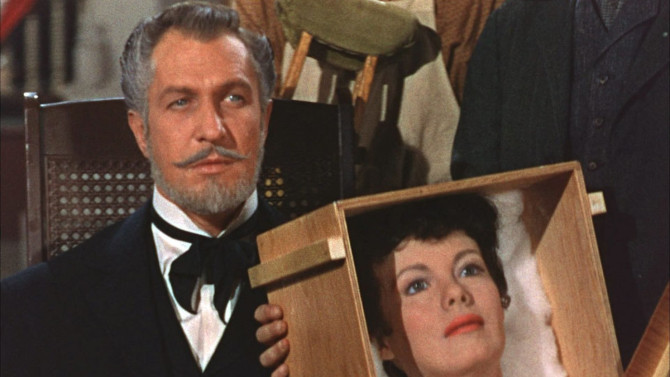 House of WaxHouse of WaxOctober 3, 2023
House of WaxHouse of WaxOctober 3, 2023A bonafide 3D early classic and a less than lauded remake, House of Wax (1953 and 2005 respectfully), are very different films. The former starring legendary actor Vincent Price and directed by André De Toth (Crime Wave), is a vividly coloured, horror tinged murder mystery, while the latter film, directed by Jaume Collet-Serra, is a moodily lit modern era slasher flick that is slowly being reappraised. One of the most successful 3D ventures of the 1950s era, De Toth frames Price’s wax artist, Professor Henry Jarrod, as a kindly and loving creative soul who is sadly betrayed by his business partner, Matthew Burke (Roy Roberts), who is a money hungry sociopath looking to invest elsewhere. Burning the wax museum down with its creator inside the building for the insurance money, the act brings bitter anger and utter madness to the once genteel artist, who somehow escapes with everyone believing he has perished in the fire.
-
Star Pick with Amanda Bearse
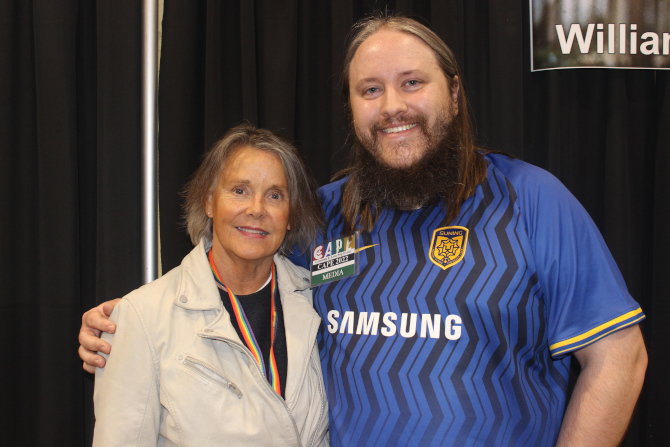 Marcy’s PlaygroundTo Kill a MockingbirdJune 18, 2023
Marcy’s PlaygroundTo Kill a MockingbirdJune 18, 2023It was an absolute pleasure to meet and interview Amanda Bearse at CAPE 2022 (Cornwall & Area Pop Event). A multi-talented actor and director, she is perhaps best remembered as troublesome neighbour Marcy in the long running television sitcom Married... with Children (she appeared in an impressive 259 episodes, while she also sat in the directorial chair 31times). Yet, two years earlier, she appeared in what must have seemed at the time to be a horror quickie that would come and go... except the annals of cinema history were not done with Fright Night – it becoming a true cult classic of the 1980s that is still growing its viewing audience today. After wrapping Married, she decided to step behind the camera more often than not, directing numerous television series, including The Jamie Foxx Show, Dharma & Greg, Sabrina the Teenage Witch, Reba, Mad TV, to name but a few. For the first time in awhile, she is back in front of the camera with last year’s Bros and the upcoming comedy Tapawingo.
-
Star Pick with Joe Gatto
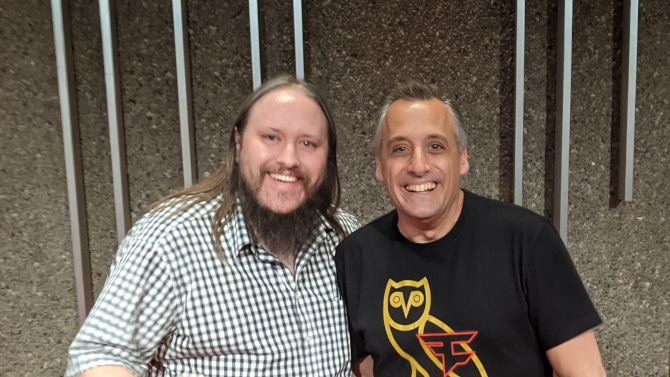 No Ordinary ‘Joe’kerYoung FrankensteinMarch 12, 2023
No Ordinary ‘Joe’kerYoung FrankensteinMarch 12, 2023I was fortunate enough to get a quick interview with Joe Gatto after his first ever comedy show in Ottawa on March 3rd, 2023. For those of you who have somehow missed him over the years, Gatto has brought joy and hilarity to the world with buddies Sal, Q, and Murr on the comedy series Impractical Jokers. After nearly a decade on television (creating worldwide catchphrases like: “Scoopski potahtos”, “Larry!”, “Up your ass and to the left”, “Who vants to paint!”, as well as so many others), Joe parted ways with the Jokers after nine seasons to focus more on family. Despite this, you’ve had ample chances to stumble upon him – sometimes with his buds as the Jokers go viral on Youtube, or by way of his very active social media accounts... and, of course, on his comedy tours. His first time in Canada, he regaled the audience with a fantastic combination of outright jokes, venue improv, past stories, and his own unique brand of physical comedy. After nearly a two hour show (which included his friend and opener Jiggy – who has also made some appearances on Impractical Jokers), the audience left with a number of jokes and stories that could make anyone laugh, as well as several local gags that only those attending would get (who knew Canadian royalty was sitting in the theatre box).
-
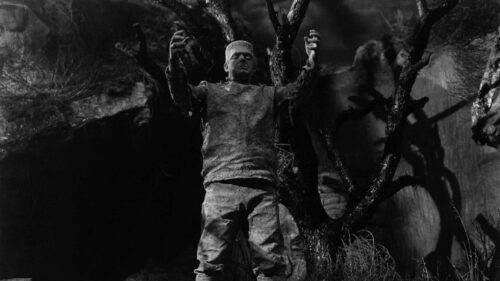
Lon Shot Sequel
The Ghost of FrankensteinOctober 10, 2022After three ultra successful films, the Frankenstein franchise was met with the task of replacing its key piece in Boris Karloff... who had a scheduling conflict and chose Arsenic and Old Lace (the play that would turn into the iconic movie just two years later) over another sequel – of which he was tiring of doing. Deciding upon another one of their monster masters as a replacement, Lon Chaney Jr. took up the mantle and became the Monster in The Ghost of Frankenstein (celebrating its 80th anniversary this 2022). Though this is where a dip in creativity, nuance, and horror is noticed, it doesn’t mean that this isn’t a lot of fun. Taking place almost immediately after 1939's Son of Frankenstein, director Erle C. Kenton reintroduces us to poor Ygor (Bela Lugosi), who was riddled with bullets and suffered a broken neck... but he simply won’t die. Now, he just sits patiently by the sulfur pits that have swallowed up his only friend, the Frankenstein Monster (Chaney Jr.).
-
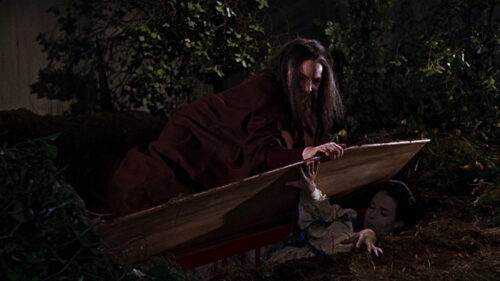
Unblushing Brides
The Brides of DraculaOctober 2, 2022Sometimes, a movie title can be misleading. Imagine heading to the theatre in 1960, excited to see Terence Fisher’s Hammer horror film The Brides of Dracula, only for the opening voice-over to exclaim, just a couple of seconds in, that Dracula is dead – that might be a bit of a letdown. But don’t worry, a new vampire will rise to start his own harem. I know what you must be thinking... did he immigrate to Europe from Utah? No, he’s one of those unusual, ultra kinky Europeans, but more on that later.

